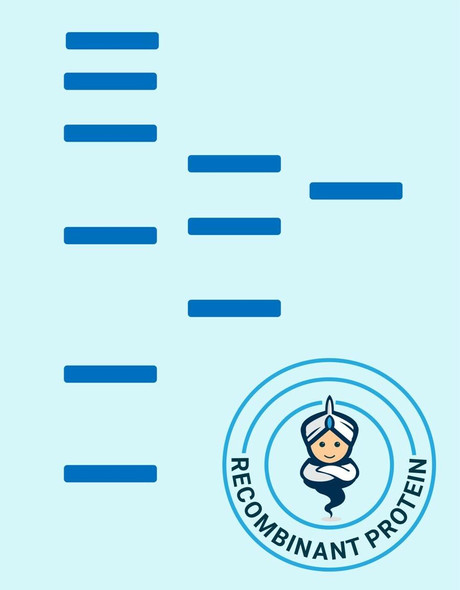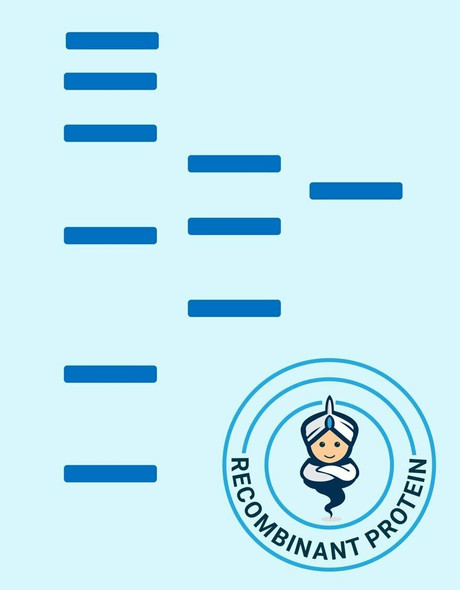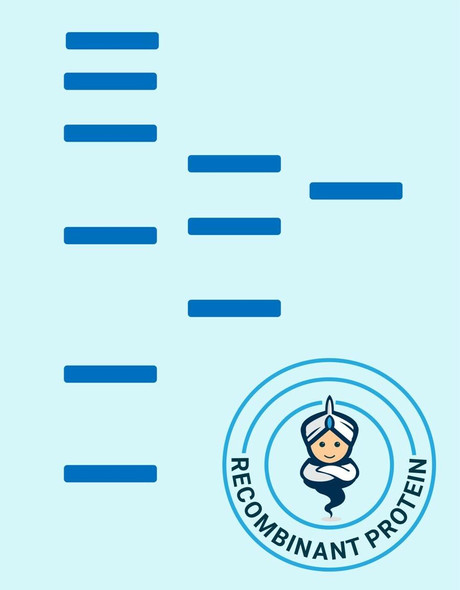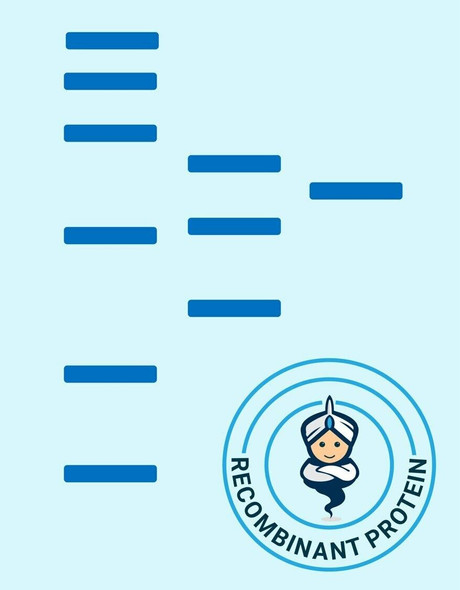Human CRP Recombinant Recombinant Protein (RPPB3262)
- SKU:
- RPPB3262
- Product type:
- Recombinant Protein
- Size:
- 1mg
- Species:
- Human
- Target:
- CRP Recombinant
- Synonyms:
- C-reactive protein
- CRP
- PTX1
- MGC88244
- Source:
- Escherichia Coli
- Uniprot:
- P02741
Description
| Product Name: | Human CRP Recombinant Recombinant Protein |
| Product Code: | RPPB3262 |
| Size: | 1mg |
| Species: | Human |
| Target: | CRP Recombinant |
| Synonyms: | C-reactive protein, CRP, PTX1, MGC88244, MGC149895. |
| Source: | Escherichia Coli |
| Physical Appearance: | Sterile Filtered clear solution. |
| Formulation: | The sterile protein solution contains 20mM Tris (pH 7.5), 2mM CaCl2, 0.14M NaCl and 0.05% NaN3. |
| Stability: | CRP should be stored at all times at 4°C. |
| Purity: | Greater than 95.0% as determined by:(a) Analysis by RP-HPLC.(b) Analysis by SDS-PAGE. |
CRP is an acute phase protein that correlates with inflammatory disease and is synthesized by hepatocytes during the acute phase response by certain cytokines (IL-1 and TNF Alpha and Beta). CRP levels increase dramatically (up to 1,000 fold) and serve as a useful marker of inflammation in such conditions as bacterial infection, rheumatoid arthritis, viral infections, transplantation rejection, meningitis, myocardial infarction, septicemia, osteomyelitis and others. CRP is also highly correlated to Serum Amyloid A levels.
Recombinant Human CRP produced in E.Coli is a non-glycosylated polypeptide chain having a total molecular mass of 115 kDa that corresponds to the pentamer structure of 23 kDa monomer determined by amino acid sequence. The CRP is purified by proprietary chromatographic techniques.
| UniProt Protein Function: | Function: Displays several functions associated with host defense: it promotes agglutination, bacterial capsular swelling, phagocytosis and complement fixation through its calcium-dependent binding to phosphorylcholine. Can interact with DNA and histones and may scavenge nuclear material released from damaged circulating cells. |
| UniProt Protein Details: | Cofactor: Binds 2 calcium ions per subunit. Subunit structure: Homopentamer. Pentaxin (or pentraxin) have a discoid arrangement of 5 non-covalently bound subunits. Subcellular location: Secreted. Tissue specificity: Found in plasma. Induction: The concentration of CRP in plasma increases greatly during acute phase response to tissue injury, infection or other inflammatory stimuli. It is induced by IL1/interleukin-1 and IL6//interleukin-6. Miscellaneous: This protein owes its name to its ability precipitate pneumococcal C-polysaccharide in the presence of calcium. Sequence similarities: Belongs to the pentaxin family.Contains 1 pentaxin domain. Mass spectrometry: Molecular mass is 23028 Da from positions 19 - 224. Determined by MALDI. Ref.15Molecular mass is 22930 Da from positions 19 - 223. Determined by MALDI. Ref.15 |
| NCBI Summary: | The protein encoded by this gene belongs to the pentaxin family. It is involved in several host defense related functions based on its ability to recognize foreign pathogens and damaged cells of the host and to initiate their elimination by interacting with humoral and cellular effector systems in the blood. Consequently, the level of this protein in plasma increases greatly during acute phase response to tissue injury, infection, or other inflammatory stimuli. [provided by RefSeq] |
| UniProt Code: | P02741 |
| NCBI GenInfo Identifier: | 117486 |
| NCBI Gene ID: | 1401 |
| NCBI Accession: | P02741.1 |
| UniProt Secondary Accession: | P02741,Q08AK3, Q8WW75, A8K078, D3DVD9, D3DVE0, |
| UniProt Related Accession: | P02741,Q5VVP7 |
| Molecular Weight: | 25,039 Da |
| NCBI Full Name: | C-reactive protein |
| NCBI Synonym Full Names: | C-reactive protein, pentraxin-related |
| NCBI Official Symbol: | CRP |
| NCBI Official Synonym Symbols: | PTX1; MGC88244; MGC149895 |
| NCBI Protein Information: | C-reactive protein; pentraxin 1; OTTHUMP00000033307 |
| UniProt Protein Name: | C-reactive protein |
| Protein Family: | Cryparin |
| UniProt Gene Name: | CRP |
| UniProt Entry Name: | CRP_HUMAN |









